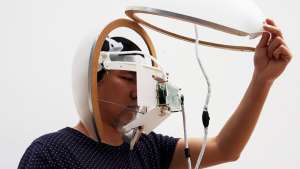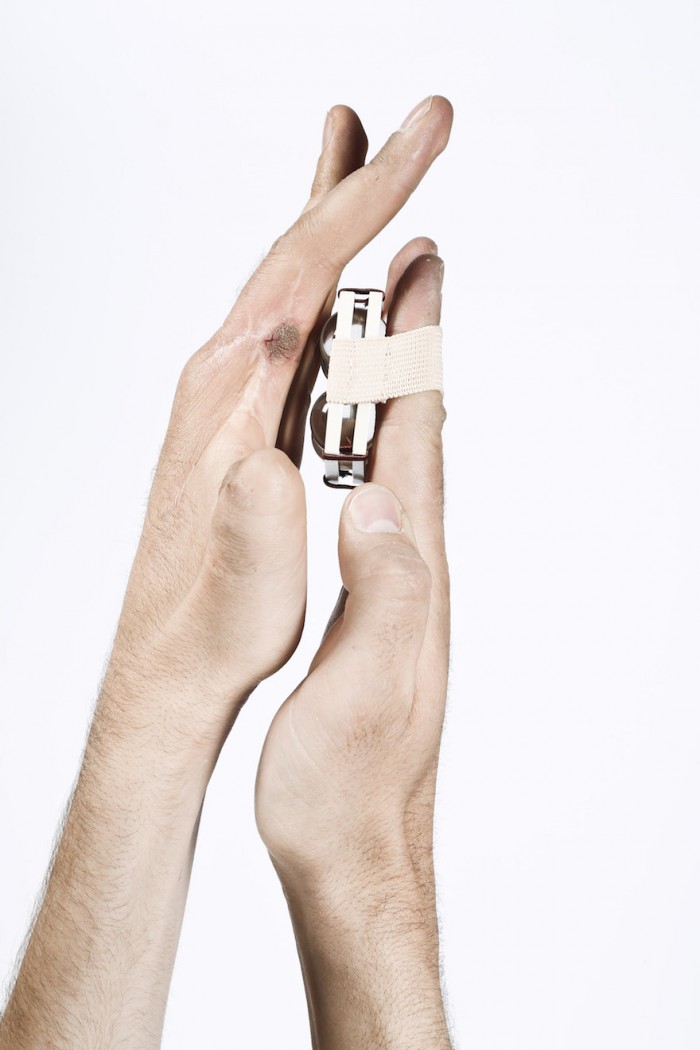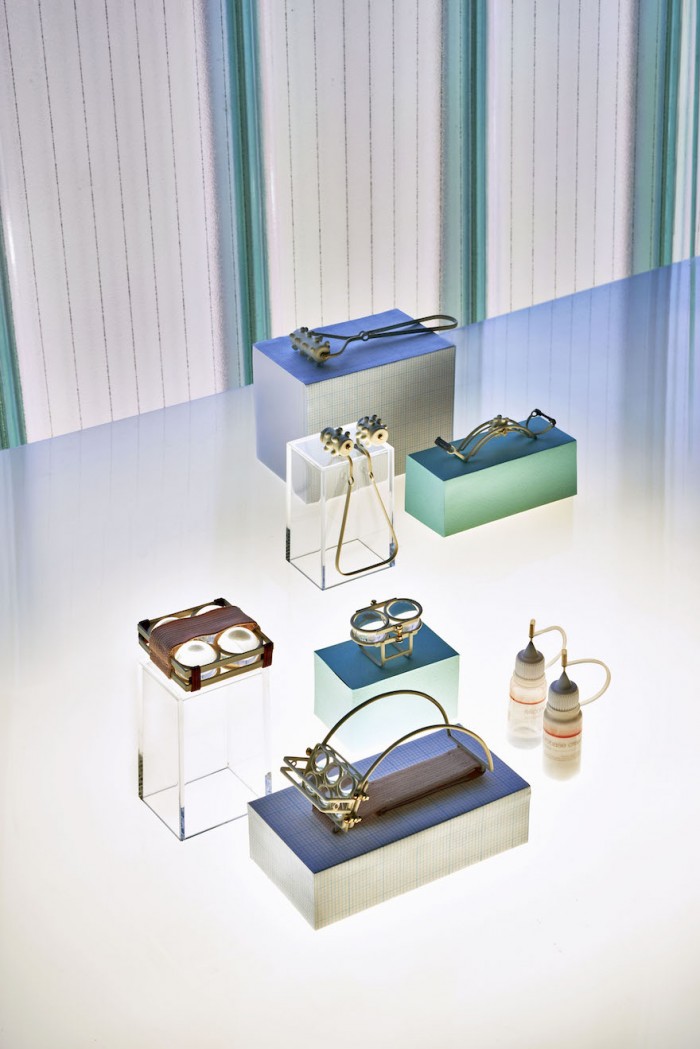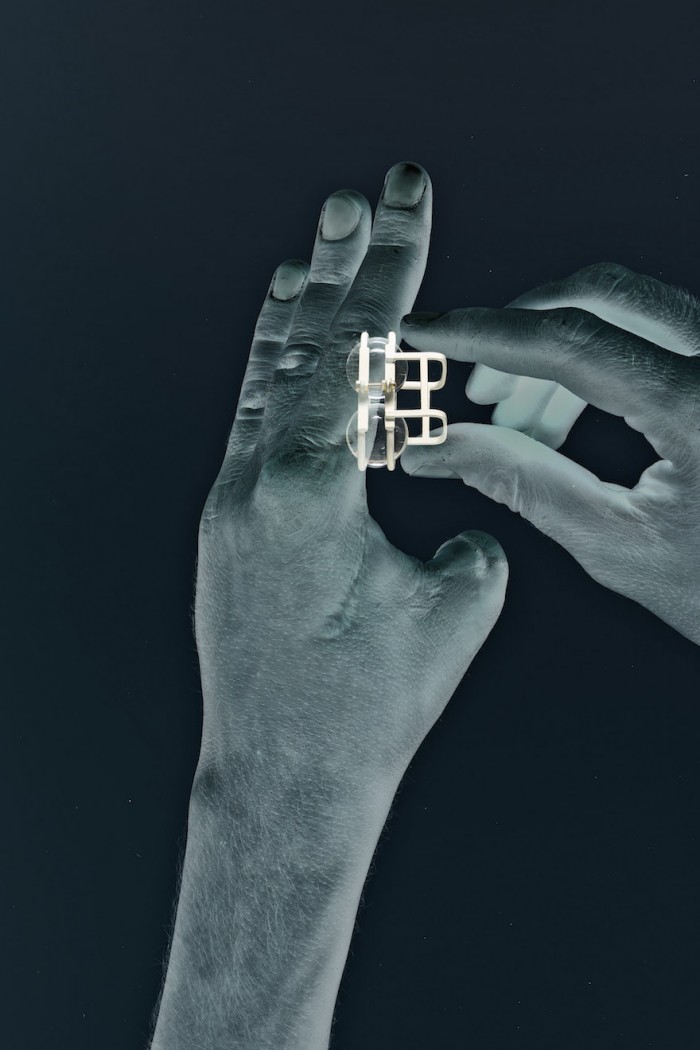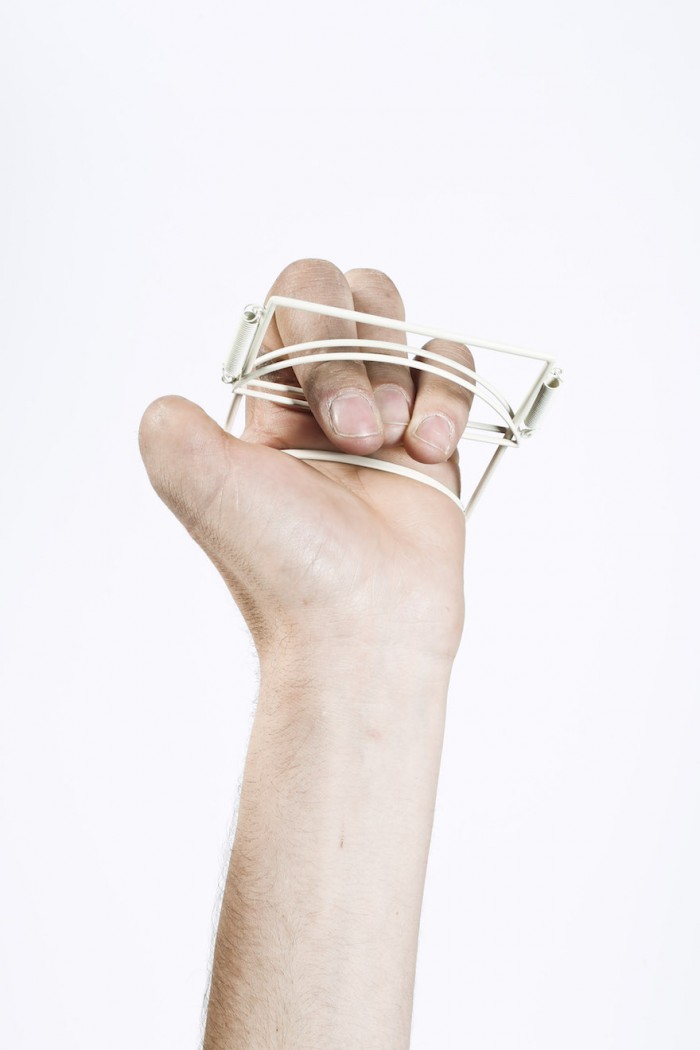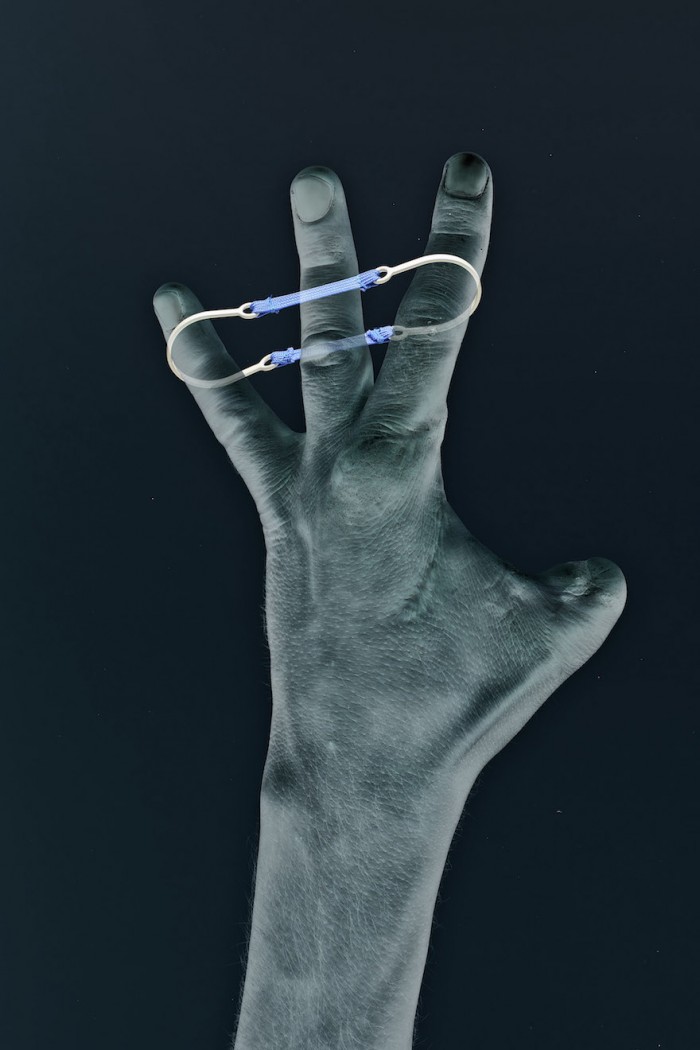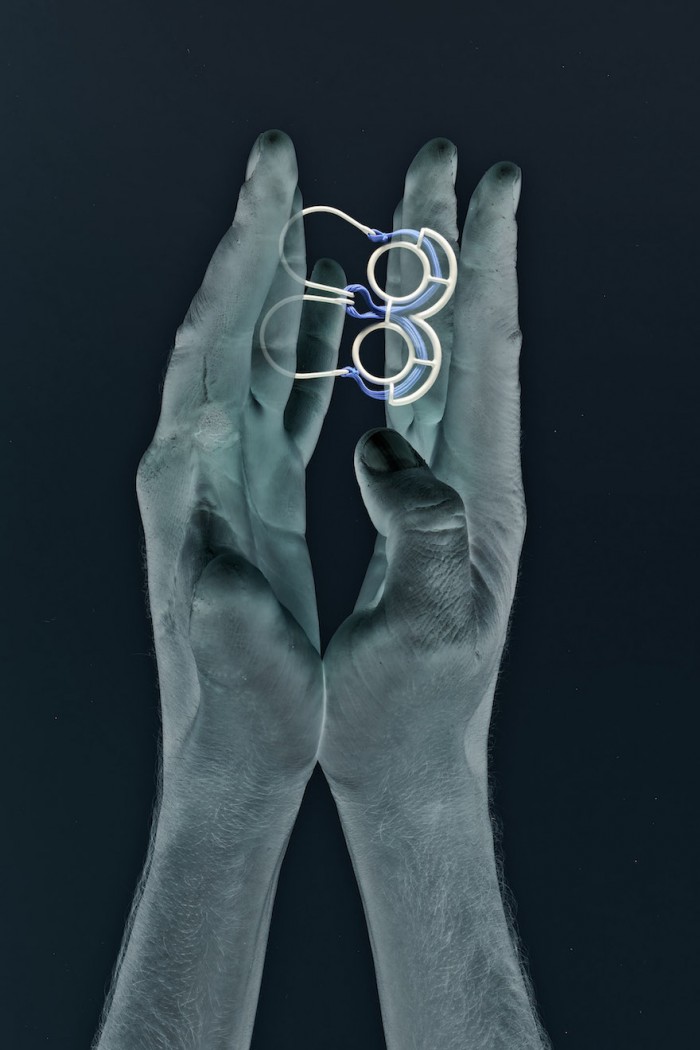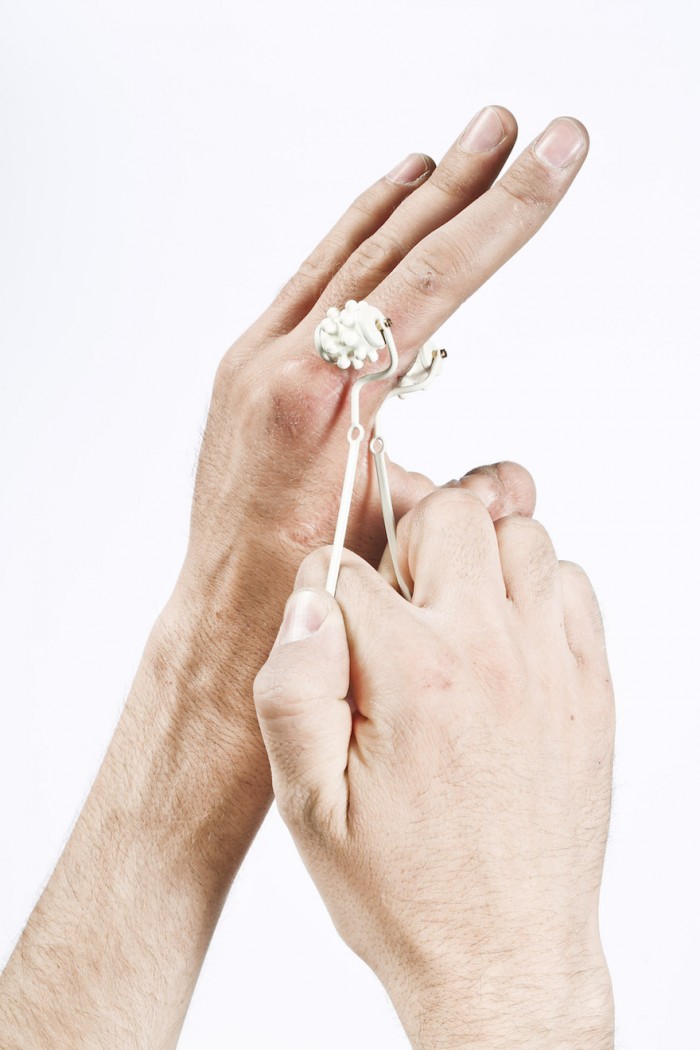From the Series
Can redesigning post-amputation rehabilitation tools and systems help prevent phantom limb pain? This is the question that guided the graduate project of Material Futures student Niloufar Esfandiary.
Phantom limb pain (PLP) is the sensation created by the brain when it misinterprets nerve signals from the stump. The physical and the psychological overlap, causing suffering and discomfort. Phantom Sensations, Esfandiary’s research project, looks at how rehabilitation can prevent PLP from occurring. She proposes a pre-emptive approach to the issue, and the creation of a better and stronger link between the brain and the missing limb.
The system is divided into three sections with various tools: Healing°, Movement° and Stimulation°. The tools help the brain and the body understand the loss, and will allow them to remap nerve paths and prevent future pain by re-educating the muscles and movement in the area, reducing the likelihood of pain.
Originally Iranian, Esfandiary was born and raised in Geneva, Switzerland. With a background in jewellery design, there is a strong sense of stylised aesthetic in the Phantom Sensations collection. We talk to Esfandiary about her project.
Where did the idea come from?
I have always been interested in anything medical, especially the brain. I knew about the notion of Phantom Limb Pain, but I never really fully understood it. Once I began researching the topic I just couldn’t stop. It is so fascinating and it also gives us a glimpse into how the brain works.
How did you research it?
Initially I researched the topic online - through articles and multiple books/medical journals. I then got deeper into the topic and decided I had to speak to medical specialists, researchers and more importantly amputee patients.
Did you speak to people who suffer from PLP?
I managed to speak to quite a few amputees who experience phantom pains. I first started with general questions online (in forums) and then picked out a group of people that I questioned further. Once I began designing and production of the pieces I had one main case study, a friend’s brother who was missing fingers on his left hand. I worked closely with him to really understand what he is going through and how can I intervene as a designer.
Were you designing for the brain or for the body?
Recent research has shown that Phantom Limb Pain originates in the brain. It manifests itself as a result of incorrect body remapping. Once you lose a limb the brain starts to remap the schema of the body within hours. If this is not done properly a phantom limb is born. So my project looks into how can we help our brain to have a healthy remapping – and the answer is through extensive rehabilitation. Each stage has been carefully designed with specific tools to help physically and mentally. Together they can prevent phantom limb pain from occurring.
What do you understand the role of the designer to be today?
I believe as a designer you must be able to find an issue (big or small), fully understand how it is an issue and think about possible solutions. We are problem-solvers.
Nowadays there is a great possibility of merging with other fields and areas such as medicine, engineering, food industry…etc. People have become more open-minded into working directly with us, designers, to push the boundaries even further.
Explain the aesthetic of your kit.
The aesthetic is very simple – there is supposed to be a “jewellery-like” visual to the items. Currently orthotics for amputee rehabilitation is very clunky and impractical. Patients do not like wearing them outside or carrying them around as they attract more attention to them. These tools are simplified – they are all metal based and powder coated so that they can be completely un-mounted and sterilized, ready for the next patient, and the production of them is cost-efficient.
What inspired the look?
The initial inspiration came from current NHS – healthcare products and how I wanted to divert away from it. The idea is to make them more desirable objects, help patients want to use them.

